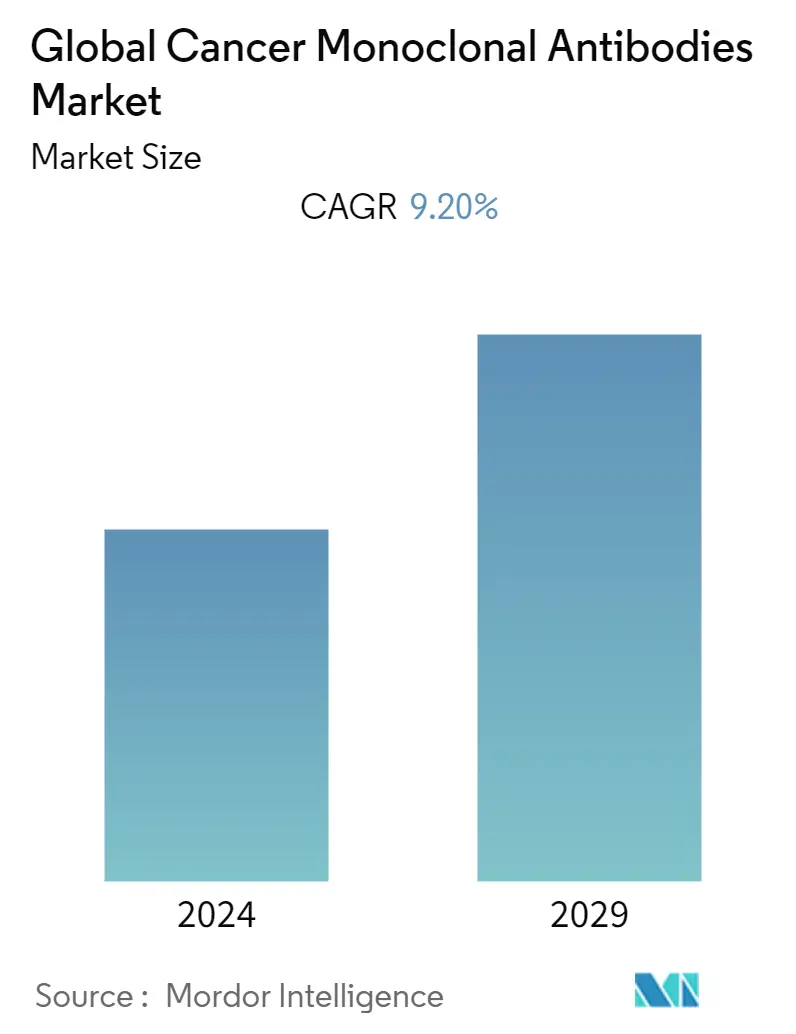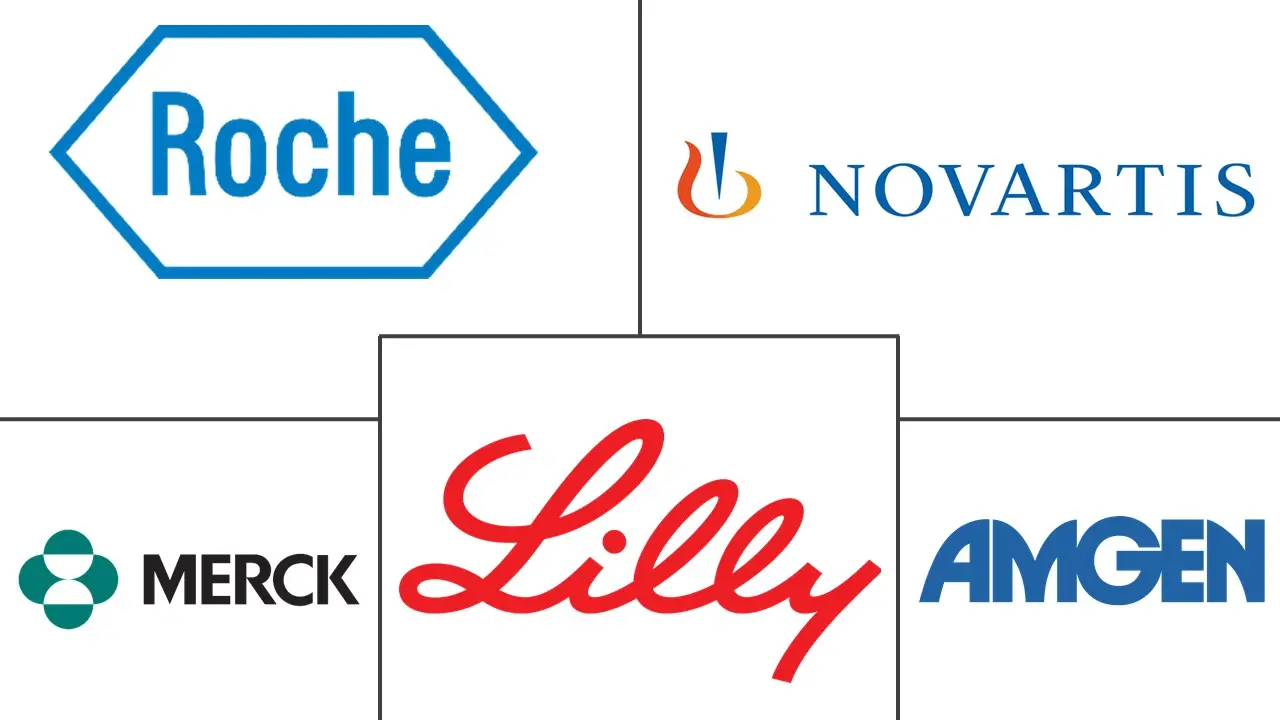Market Size of Global Cancer Monoclonal Antibodies Industry

| Study Period | 2019 - 2029 |
| Base Year For Estimation | 2023 |
| Forecast Data Period | 2024 - 2029 |
| CAGR | 9.20 % |
| Fastest Growing Market | Asia Pacific |
| Largest Market | North America |
Major Players
*Disclaimer: Major Players sorted in no particular order |
Need a report that reflects how COVID-19 has impacted this market and its growth?
Cancer Monoclonal Antibodies Market Analysis
The cancer monoclonal antibodies market is expected to witness a CAGR of 9.2% during the forecast period (2022-2027).
The COVID-19 pandemic is an unprecedented health concern that is impacting the tumor ablation market. For instance, a study titled 'Impact of the COVID-19 Pandemic on Cancer Care: A Global Collaborative Study' in 2020 reported that A total of 356 centers from 54 countries across six continents participated between April 21 and May 8, 2020. These centers serve 716,979 new patients with cancer a year. Most of them (88.2%) reported facing challenges in delivering care during the pandemic. Although 55.34% reduced services as part of a preemptive strategy, other common reasons included an overwhelmed system (19.94%), lack of personal protective equipment (19.10%), staff shortage (17.98%), and restricted access to medications (9.83%). In the study "Monoclonal antibodies and cancer treatment: What to know" published in November 2020, cancer isn't the only disease treated with monoclonal antibodies. Antibody targets on the coronavirus have also been identified. Monoclonal antibodies help shorten the time of severe illness by preventing the infected cells from multiplying. Thus, expanded application of monoclonal antibodies in COVID-19, the studied market had been significantly impacted by COVID-19.
Certain factors that are driving the market growth include the growing prevalence of cancer, increasing investment in R&D of genomic studies, and rising advancements in and preference toward the specificity of monoclonal antibodies to target cancer. Furthermore, the increasing cancer burden due to several factors such as population growth and aging, and the changing prevalence of certain causes of cancer are linked to social and economic development. For instance, as per the World Health Organization (WHO) in February 2022, in terms of new cases of cancer, the most common cancer in 2020 were: breast (2.26 million cases); lung (2.21 million cases); colon and rectum (1.93 million cases); prostate (1.41 million cases); skin (non-melanoma) (1.20 million cases); and stomach (1.09 million cases).
In addition, as per the 2020 statistics by GLOBOCAN 2020, an estimated 19,292,789 people were diagnosed with cancer in 2020. As per the same source mentioned above, the number of people suffering from cancer is estimated to reach 30.2 million by 2040. Thus, the increased use of monoclonal antibodies for the treatment of cancer is driving this market.
Moreover, strategic market initiatives by market players will also lead to significant growth of the market. In February 2022, HaemaLogiX Ltd (HaemaLogiX) and Lonza agreed to manufacture the next clinical batch (cGMP) of HaemaLogiX's lead multiple myeloma drug candidate, KappaMab, a monoclonal antibody that binds to a cell surface target called kappa myeloma antigen (KMA) that is only found on myeloma cancer cells and not on normal plasma cells.
However, following the regulatory guidelines for monoclonal antibodies related to cancer is a highly rigorous process in most regions, globally. Thus, may impact the growth of the market over the forecast period.
